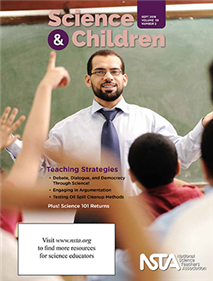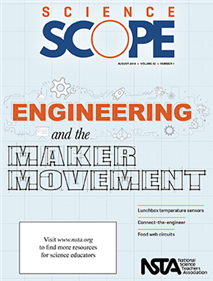All Life Science resources
NSTA Press Book
Patterns and the Plant World, Grade 1: STEM Road Map for Elementary School
What if you could challenge your first graders to relate changes in seasonal weather patterns to changes in the plant world using a container garden? With this volume in the STEM Road Map Curriculum Series, you can!...
Blog Post
First Graders Become Corn Experts: Using Questions to Drive Instruction
First graders love when fall comes to Kansas. It’s a magical time when lots of events are occurring in their environment, and I take full advantage of their natural curiosity. We begin the school year with a mini science unit featuring corn and agr...
By Cindy Workosky
NSTA Press Book
Reading Nature: Engaging Biology Students With Evidence From the Living World
By making room for this book in your curriculum, you’ll have a fresh way to motivate your students to look at the living world and ask not only “Why?” but also “How do we know?” Unique in both its structure and approach, Reading Nature is a...
By Matthew Kloser, Sophia Grathwol
NSTA Press Book
Engineering in the Life Sciences, 9–12
When the authors of this book took part in Project INFUSE, the National Science Foundation–funded teacher development program, they noticed something. Life science teachers were highly receptive to engineering ideas related to everything from genom...
By Rodney L. Custer, Jenny L. Daugherty, Julia M. Ross, Katheryn B. Kennedy, Cory Culbertson
Journal Article
The Early Years: Begin With Open Exploration
This column discusses resources and science topics related to students in grades preK to 2. This issue discusses ways to encourage children to engage in open exploration to learn about living organisms....
Journal Article
Citizen Science: Be a Zombee Hunter for Science
This column highlights formal and informal science research projects that students can join and contribute to by gathering and sharing data. Celebrate National Honey Month this September with honeybee citizen science. ZomBee Watch, a project in par...
Blog Post
Global Thinking Inside and Outside the Classroom
Dynamic Equilibrium. These two words represent what is essential in teaching Earth science: the idea that forces are constantly working against one another, but often do so in ways that nearly counteract one another....
By Cindy Workosky
NSTA Press Book
Designing Meaningful STEM Lessons
Sure, there are lots of cool STEM activities you can use in class. But do they really help your students learn science? This book shows you how to take lessons you’re already familiar with and, through small changes, do what the title says: Design ...
By Milton Huling, Jackie Speake Dwyer




